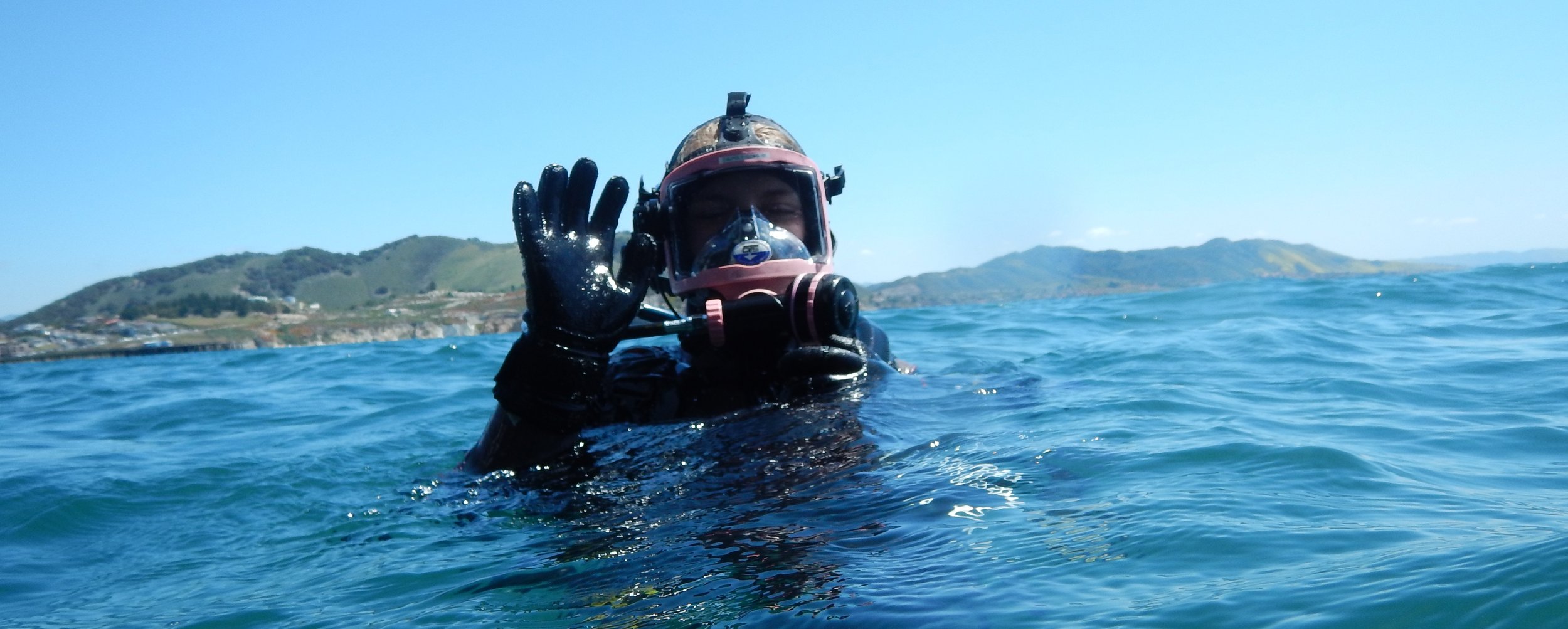
DIver 360:
urchins & kelp
about this lesson plan
DIVER 360: Urchins and Kelp
This lesson plan is focused on HS-LS2 Ecosystems: Interactions, Energy, and Dynamics. In the lesson plan high school students watch videos filmed underwater to experience SCUBA diving and conduct scientific methods themselves (“swim” a transect and count sea urchins and kelp), after which they analyze their data and compare results (in between control and restoration sites), culminating in their achievement of the three NGSS Performance Expectations:
HS-LS2-1: Use mathematical and/or computational representations to support explanations of factors that affect carrying capacity of ecosystems at different scales
HS-LS2-2: Use mathematical representations to support and revise explanations based on evidence about factors affecting biodiversity and populations in ecosystems of different scales.
HS-LS2-6: Evaluate claims, evidence, and reasoning that the complex interactions in ecosystems maintain relatively consistent numbers and types of organisms in stable conditions, but changing conditions may result in a new ecosystem.
Overall, the lesson plan teaches High School students two Core Disciplinary Ideas:
LS2.A: Interdependent Relationships in Ecosystems: Ecosystems have carrying capacities, which are limits to the numbers of organisms and populations they can support. These limits result from such factors as the availability of living and nonliving resources and from such challenges such as predation, competition, and disease. Organisms would have the capacity to produce populations of great size were it not for the fact that environments and resources are finite. This fundamental tension affects the abundance (number of individuals) of species in any given ecosystem. (HS-LS2-1),(HS-LS2-2)
LS2.C: Ecosystem Dynamics, Functioning, and Resilience: A complex set of interactions within an ecosystem can keep its numbers and types of organisms relatively constant over long periods of time under stable conditions. If a modest biological or physical disturbance to an ecosystem occurs, it may return to its more or less original status (i.e., the ecosystem is resilient), as opposed to becoming a very different ecosystem. Extreme fluctuations in conditions or the size of any population, however, can challenge the functioning of ecosystems in terms of resources and habitat availability. (HS-LS2-2),(HS-LS2-6)
Downloads
RECOMMENDED: Lesson Plan to be run over two 50-minute class periods
SLIDE SHOW
Thank you for using our educational material. To help us know how far and wide these materials have been used, please fill out this brief survey. We also would greatly appreciate any feedback you would like to offer.
ALTERNATIVE: Lesson Plan to be run over one 50-minute class period



